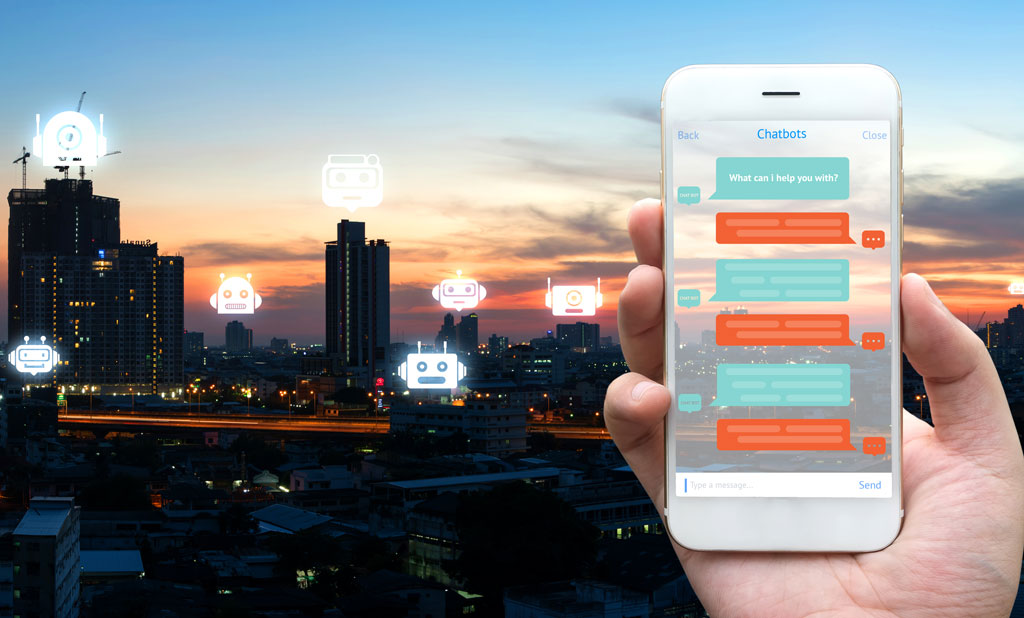It is only natural that businesses look within their own territory or market to learn about new technology. But chatbots are a global phenomenon, adopted far faster outside the west that most others, so taking a look at their growth, use and adoption globally provides some valuable insights.
Chatbot Market Size In China and India
Both countries have populations of over 1.3 billion people, or over a third of the world’s population. That makes them the global focus for customer service automation to battle the sheer volume of calls that even a small public business will receive.
Banks, airlines and hotels are adopting chatbots at high speed to cope with the demand, with the likes of WeChat dominating platform usage with its 700 million users across Asia. While China’s Baidu with 800 million customers has been acquiring natural language tech and other services to help build out an advanced bot strategy.
This includes the likes of medical advice bots for doctors to use, launched in 2016, ahead of western efforts. As a search engine, Baidu and social media services like WeChat see a future of concierge services helping people with their day-to-day tasks, WeChat’s WeSecretary offers to handle a range of payment and booking tasks from the one portal, saving wading through apps and sites.
It is not too hard to imagine western virtual assistants and chatbots offering the same level of service, with reminders and updates. We can already orders Uber rides and pizzas, so why not banking and bills?
The African Mobile Boom
Africa’s dominant use of mobile devices over PCs sees the continent makes them the next natural target for chatbot adoption. Many still use SMS services for business and banking transactions and as network quality improves, chatbots are the next rung up the ladder.
Organisations like United Bank for Africa offer chabots of increasing sophistication like Leo, arriving in many countries across the continent to help customers open and manage accounts, check their balances or transfer funds, all via Facebook Messenger.
Leo shows his flexibility as it can provide a service to pay for mobile minutes and show the latest football scores. Any bot operating at a continental scale must have a clear purpose but also offer features that will boost engagement.
The complexity of the Asian and African landscape makes chatbots an ideal way to simplify messages across continents and to provide a unified service with wide reach to address the huge audience.
The West Plays Catch Up
Many western-focused businesses still seem to be operating in the trial or test mode for their chatbots. Perhaps that’s because we have so many other ways of dealing with businesses, and they have a wide range of customer reach options.
Many brands are also waiting for some key tipping point, when a company’s chatbot suddenly adds massive value or has a key impact. That might help drive widespread adoption, but waiting too long will leave many companies lagging far behind on the chatbot curve.
Even so, the speed of adoption is picking up, as businesses look to streamline customer support and as brands look to build on their engagement through chatbots. Certainly, businesses need to be more positive about their chatbots and push them out to customers with enthusiasm and be prepared to take the odd piece of negative feedback as part of the path to widespread chatbot adoption.
Focusing on the chatbot as a clear and simple voice for the business, regardless of the market, can help a business win over customers. Adding personality and additional features helps build out the overall experience that will make a winning chatbot to drive usage and help boost loyalty.
In the west, the rise of virtual assistants will also provide a boost as bots and AI merge to become one wider system, across multiple device types with voice, chat and other interfaces. AI-powered smartphones will boost the number of services that can link to chatbots and provide a broader experience, but this is something for the 2020s generation of chatbot builder to worry about.
For now, getting those first chatbots built and operational will provide any business with the confidence and knowledge base to prepare for a time when every business uses them, and every customer expects to be able to use one.
